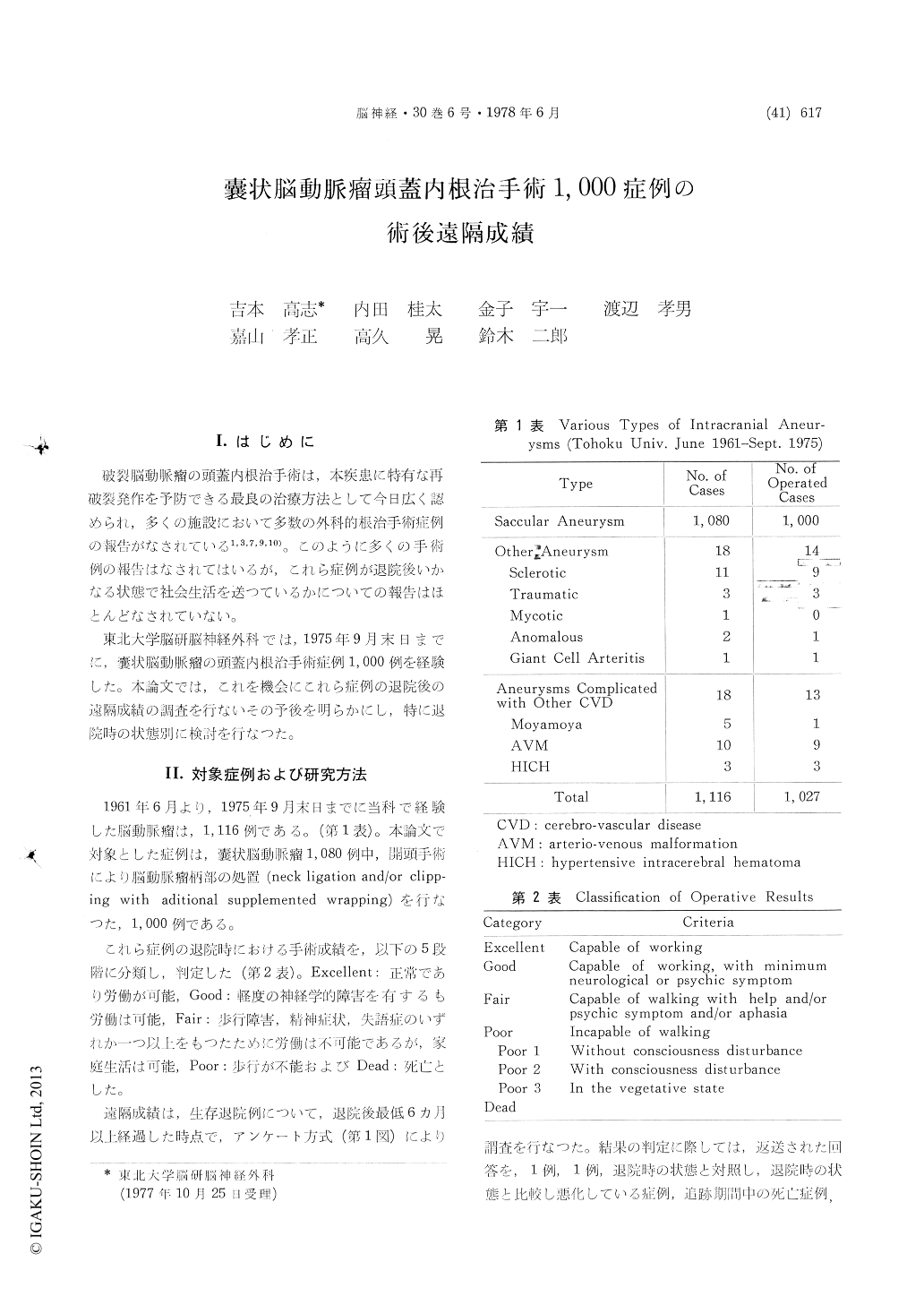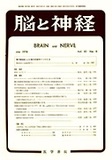Japanese
English
- 有料閲覧
- Abstract 文献概要
- 1ページ目 Look Inside
I.はじめに
破裂脳動脈瘤の頭蓋内根治手術は,本疾患に特有な再破裂発作を予防できる最良の治療方法として今日広く認められ,多くの施設において多数の外科的根治手術症例の報告がなされている1,3,7,9,10)。このように多くの手術例の報告はなされてはいるが,これら症例が退院後いかなる状態で社会生活を送つているかについての報告はほとんどなされていない。
東北大学脳研脳神経外科では,1975年9月末日までに,嚢状脳動脈瘤の頭蓋内根治手術症例1,000例を経験した。本論文では,これを機会にこれら症例の退院後の遠隔成績の調査を行ないその予後を明らかにし,特に退院時の状態別に検討を行なつた。
During the period from June, 1961 to September, 1975 in Tohoku University, 1080 cases of intra-cranial saccular aneurysms were experienced in-cluding 1000 cases treated by direct intracranial surgery. This investigation is based on the follow-up results of the 1000 cases with emphasis on the daily lives of the patients. The postoperaed con-ditions of the cases were classified into the following 5 groups: "Excellent", the patients is fully capable for employment, "Good", the patient is capable of working, although some neurological deficits remain, "Fair", the patient has one or more of three handicaps Incapability of walking indepencently, psychic disturbances or aphasia,"Poor", the patient is completely incapable of walking even with asistance. This group was further classified into three subdivisions. Poor I, no consciousness dis-turbances, Poor II. with consciousness disturbances and Poor III, vegetative stage.
The results of the 1000 cases were evaluated on discharge. The total consisted of 543 excellent cases, 186 good, 117 fair, 93 poor and 61 deaths.
The follow-up studies were obtained from 876 out of the 939 cases which were discharged from the hospital (the follow-up rate of 93.3 per cent). The follow-up periods ranged from six months in minimum to 14 years and 5 months in maximum with the average periods of 3 years and 7 months. The results on follow-up studies revealed 621 excellent cases, 112 good, 48 fair, 31 poor, and 64 fatal cases.
The comparison between the results on discharge and on follow-up studies showed an increase in the number of excellent cases at follow-up. Cases of good and fair on discharge improved to the excellent group in follow-up at rate of 55 and 35 per cent, respectively. Moreover some of the poor cases classified as poor I and II at discharge belonged to the excellent or good group in follow-up studies. However the cases classified as poor III on discharge did not improved. All cases were reported as poor and dead.
The causes of death in excellent, good and fair groups were attributed to postoperative acquired diseases such as stroke, neoplasma, cardiac attack and trauma. However, the cases of death in poor group especially poor III were mainly attributed to progressive deterioration after aneurysm surgery.

Copyright © 1978, Igaku-Shoin Ltd. All rights reserved.


